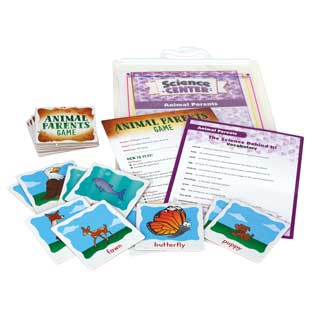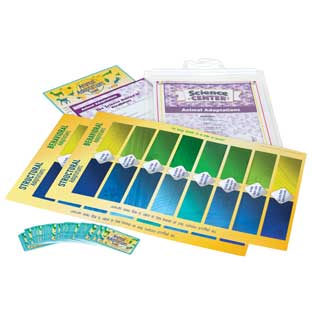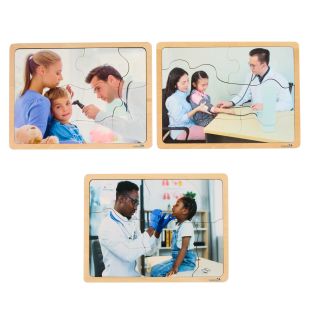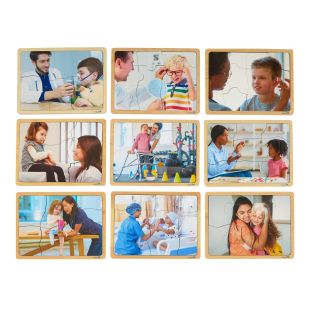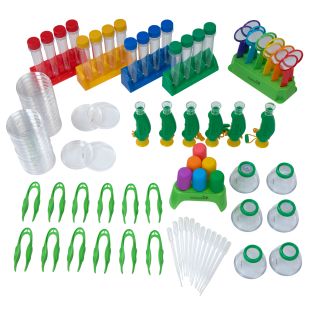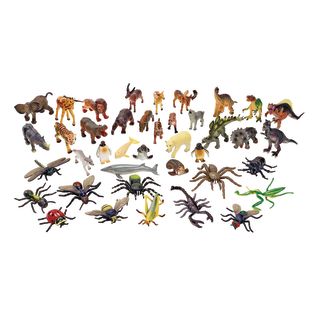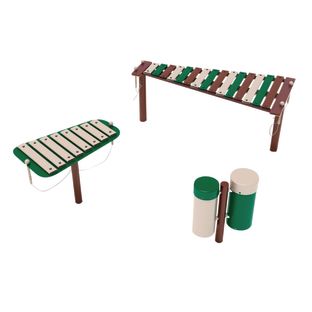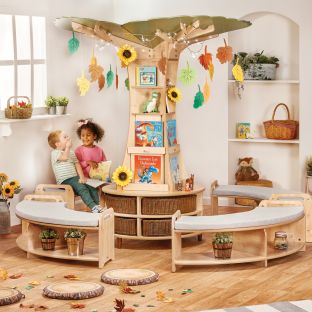life science supplies in schools
Find More about Life Science Materials
Life Science Materials for Schools are essential tools that enable educators to bring the wonders of biology and environmental science into the classroom, fostering a love for learning that sticks with students for life. At Really Good Stuff, our carefully curated collection of developmentally and age-appropriate Life Science Materials is designed for preschool through middle school, ensuring that lessons are engaging, interactive, and effective. From hands-on kits that help students explore plant and animal biology to resources that encourage them to study ecosystems, our products support inquiry-based learning and promote critical thinking skills. When teachers utilize these materials, they create an atmosphere where curiosity thrives, and scientific principles come to life.
With Really Good Stuff, you don’t just get a wide selection of quality, durable products from trusted brands—you also enjoy competitive prices that make it easier to equip your classroom without breaking the bank. Our popular Life Science Materials for Classrooms are thoughtfully designed to meet the diverse needs of students, enabling educators to tailor lessons to various learning styles and developmental stages. In preparation for 2025 and beyond, investing in adaptable life science resources ensures your students are ready to explore, question, and understand the world around them. Equip your classroom with Really Good Stuff’s life science tools, and watch your students flourish!
Classroom Life Science Materials from Trusted Brands
Finding the right life science supplies for the classroom is simple with Really Good Stuff’s curated collection of high-quality options tailored for preschool, kindergarten, elementary, and Middle School students. Featuring top brands like Really Good Stuff®, Excellerations®, and Insect Lore, these engaging resources promote hands-on learning, helping children build fine motor skills, creativity, and critical thinking. Whether you're looking for colorful products, our classroom supplies make lessons more dynamic and fun. As part of our broader selection of educational science materials, these tools give teachers the flexibility to design both structured and exploratory activities. With durable materials, teacher-approved designs, and competitive pricing, Really Good Stuff is your go-to source for classroom-ready life science supplies that inspire creativity and collaboration.
Highly-Rated Life Science Materials For Every Classroom Budget
Educators searching for dependable life science supplies for their classrooms will discover a versatile and well-reviewed collection at Really Good Stuff. Designed to spark creative expression and encourage interactive learning, our selection includes popular categories, all rated an average of 3.5 stars by teachers. Whether you're picking up cost-effective items starting at $8.99 or outfitting your classroom with complete sets priced up to $239.99, our range fits a wide variety of school budgets. These supplies, part of our extensive science materials category, are chosen for their long-lasting quality, bold colors, and ease of use for young students. With most products averaging around $63.23, teachers can rely on Really Good Stuff to deliver classroom-proven resources that foster creativity, fine motor development, and collaborative learning across preschool, kindergarten, elementary, and middle school grade levels.
These top-rated life science supplies from Really Good Stuff are trusted favorites among teachers.
- Excellerations® earlySTEM™ Toddler Specimen Viewers - Set of 4 (5 Stars) – $43.99
- Science Flip Chart Primary - 1 flip chart (5 Stars) – $36.10
- Plant Observation Journals And Wonder Soil Kit - 1 multi-item kit (4 Stars) – $48.29
From structured lessons to open-ended play, our life science supplies provide the essential tools to inspire creativity and self-expression in early learners.
Using Life Science Materials For Classroom Projects and Home Learning
Life Science Materials are invaluable for teachers and parents alike, serving as the foundation for engaging and informative lessons that explore the complexities of living organisms and their environments. These materials can be integrated into lessons on ecosystems, biodiversity, human anatomy, and plant biology, facilitating hands-on learning experiences that capture students' imaginations. For instance, educators can utilize life science kits that include plants, animal models, or interactive charts to enhance lessons, making them more relatable and easier to comprehend, ultimately fostering a deeper understanding of life science concepts.
In addition to traditional lessons, Life Science Materials lend themselves beautifully to a variety of classroom projects. Students can conduct experiments involving plant growth, study animal habitats, or create dioramas representing different ecosystems, allowing them to apply their theoretical knowledge in practical scenarios. These projects encourage critical thinking and collaboration among students, tapping into their creativity while enhancing their comprehension of scientific principles. Teachers can further enrich these activities by combining life science supplies with other classroom essentials such as art materials for project presentations, graphing tools for data collection, and even technology like digital microscopes for deeper exploration.
At Really Good Stuff, we understand the needs of educators and parents when it comes to sourcing quality Life Science Materials. Our extensive selection is designed to support a wide range of curriculum needs at competitive prices, ensuring that classrooms are equipped with the right tools to inspire learning and exploration in the field of life sciences. Whether you’re stocking up for the school year or enhancing your home learning environment, our life science products are crafted to facilitate effective and stimulating educational experiences.
FAQs about Life Science Materials in Education
Which life science materials from Really Good Stuff are best for engaging, educational classroom projects?
Educators consistently recommend these highly rated life science supplies from Really Good Stuff for their ability to enhance student learning and engagement.
- Excellerations® earlySTEM™ Toddler Specimen Viewers - Set of 4 (5 Stars) – $43.99
- Science Flip Chart Primary - 1 flip chart (5 Stars) – $36.10
- Plant Observation Journals And Wonder Soil Kit - 1 multi-item kit (4 Stars) – $48.29
What are the top-selling life science materials teachers love from Really Good Stuff?
Teachers searching for the most popular and effective life science materials for classroom activities will find these best-sellers from Really Good Stuff.
Which brands of life science supplies does Really Good Stuff carry for classroom use?
Really Good Stuff partners with 10 trusted brands to offer high-quality life science supplies that meet the needs of teachers and students. Among the most recognized names are Really Good Stuff®, Excellerations®, and Insect Lore. These brands are known for producing durable, student-safe materials that support creative learning, making go-to choices for educators seeking dependable classroom life science materials.
What kinds of science materials does Really Good Stuff offer in addition to life science materials?
In addition to life science supplies, Really Good Stuff also offers an extensive selection of classroom material such as earth & space science supplies, physical science supplies, and steve spangler science® materials. These versatile resources encourage hands-on exploration, help students develop fine motor skills and promote self-expression and active-learning in the classroom.
What age groups and school types are Really Good Stuff's life science materials best suited for?
Really Good Stuff’s Life Science Materials are thoughtfully designed for students in kindergarten through middle school, catering specifically to both elementary and middle school settings. For younger students in kindergarten through second grade, these materials promote hands-on exploration and engage learners with fundamental concepts in life science, such as the needs of living things and basic ecosystem interactions. As students progress into third through fifth grades, the materials become increasingly sophisticated, introducing more complex topics like food chains and plant biology, which encourage critical thinking and foster a deeper understanding of scientific principles. For middle school learners, the materials transition to more advanced topics, including genetics and cellular structures, aligning with their developing cognitive abilities and preparing them for higher levels of scientific inquiry. Overall, Really Good Stuff’s Life Science Materials not only enhance classroom learning but also promote curiosity and a lifelong interest in the natural world.
In what ways do life science supplies support students' learning and skill development in the classroom?
Life Science Materials enhance students' learning and development by engaging them in hands-on, experiential learning that fosters curiosity and critical thinking. By interacting with these resources, students not only grasp complex scientific concepts more easily but also develop essential skills such as collaboration and problem-solving. These materials stimulate inquiry-based learning, allowing students to explore real-world applications of theoretical knowledge. Ultimately, this approach cultivates a deeper understanding of life sciences and inspires a lifelong passion for learning.
How can teachers integrate life science materials into classroom activities to improve engagement and learning?
Incorporating Life Science Materials into classroom activities can greatly enhance student learning by providing hands-on experiences that bring concepts to life. For instance, using a plant growth kit allows students to observe the life cycle of plants firsthand, fostering a deeper understanding of photosynthesis and biodiversity. Similarly, interactive models of human anatomy can engage students in lessons about biology and health, making abstract concepts more tangible. By facilitating experiments such as observing microorganisms under a microscope, educators create opportunities for inquiry-based learning that sparks curiosity and critical thinking. These materials not only enrich the curriculum but also encourage collaboration and discussion among students, making learning a more dynamic process.
Besides teachers, who else can benefit from using life science materials from Really Good Stuff?
Life Science Materials from Really Good Stuff can greatly benefit a variety of individuals who work with children outside traditional educational settings. For instance, parents and caregivers can utilize these resources to foster a love for science in their children through engaging and interactive activities at home. Additionally, youth group leaders and camp counselors can enhance their programs by incorporating these materials into hands-on learning experiences, sparking curiosity about the natural world. Furthermore, after-school program coordinators can use these resources to create enriching activities that reinforce science concepts in a fun and accessible way, cultivating a sense of exploration among young learners.
Why is Really Good Stuff the best choice to purchasing life science materials?
Really Good Stuff stands out as the premier destination for Life Science Materials because we prioritize quality, innovation, and educators' needs. Our thoughtfully curated products not only enhance hands-on learning but also align with current educational standards, ensuring teachers are equipped to inspire their students effectively. With an unwavering commitment to exceptional customer service, we strive to support educators at every step of their purchasing journey. Plus, our extensive selection means you'll find everything you need in one place, making it easier to create engaging and impactful science lessons.
How can famililes and caregivers use life science supplies at home to encourage learning and skill development?
Life Science Materials can be invaluable tools beyond the classroom by fostering a deeper understanding of scientific concepts in real-world contexts. They can be utilized in after-school programs, science clubs, or community events, encouraging hands-on exploration and collaboration among peers. By engaging with these materials at home or in public spaces, learners can develop critical thinking and problem-solving skills while reinforcing their knowledge in biology and environmental science. Additionally, families can integrate these resources into daily life, transforming routine activities into exciting learning experiences that spark curiosity and promote lifelong learning.
What types of lessons across different subjects can include life science materials to enrich student learning?
Life Science Materials offer a dynamic way to enhance student learning across various subjects by integrating hands-on experiences and real-world applications. For instance, in a biology lesson, students can study ecosystems while simultaneously incorporating lessons in math through data collection and analysis of species populations. This experiential approach not only deepens their understanding of life science concepts but also fosters critical thinking and problem-solving skills applicable in subjects like environmental science and social studies. By connecting life science to broader themes such as sustainability and biodiversity, educators can create a multidimensional learning experience that resonates with students across different disciplines.
Which other classroom supplies pair well with life science materials for interactive learning activities?
What are some classroom projects and activities that use life science materials to engage students?
Engaging students with Life Science Materials can take many creative forms, such as hands-on experiments that allow them to observe ecosystems firsthand, like creating a mini-garden or a terrarium. Interactive projects that explore the life cycles of plants and animals can spark curiosity and foster a deeper understanding of biological processes. Integrating technology, such as digital simulations or virtual field trips to various habitats, can also captivate students’ imaginations while providing a rich learning experience. Ultimately, these activities not only deepen their knowledge of life sciences but also encourage teamwork and critical thinking skills. With the right materials and approach, students can enjoy a dynamic exploration of the natural world.
Find More Life Science Materials by School
Find More Life Science Materials by Brand
Find More Science Materials
View More
View Full Product Description
View More
View Full Product Description





